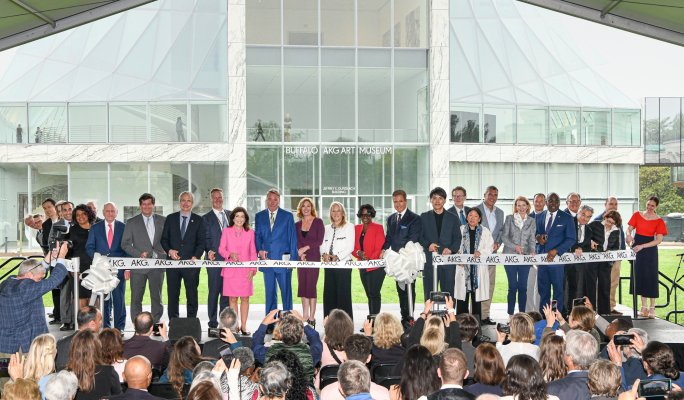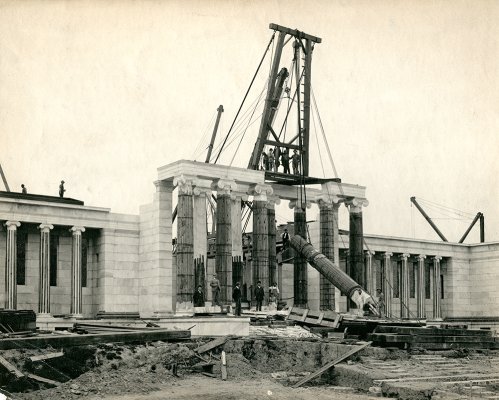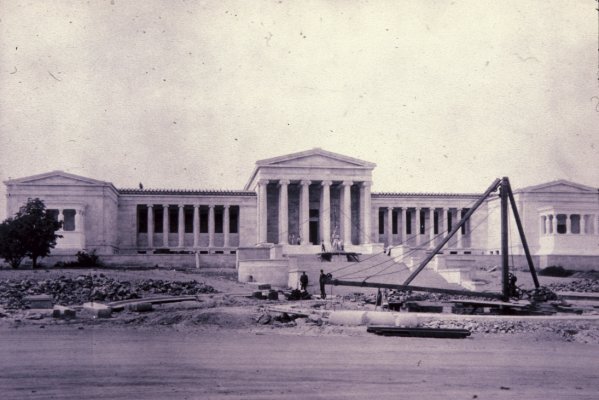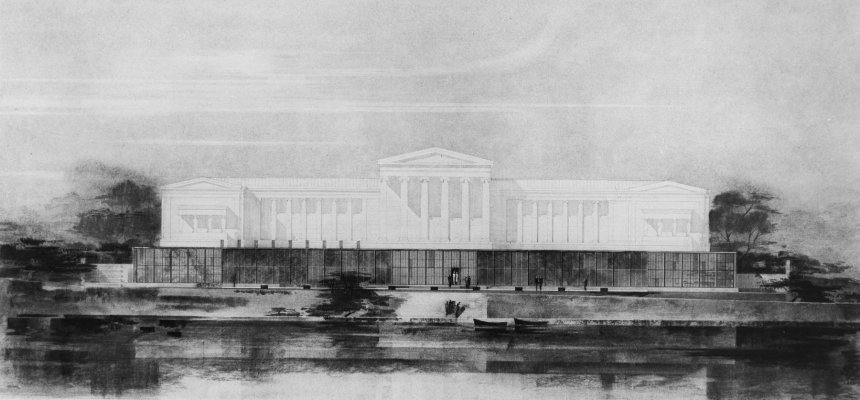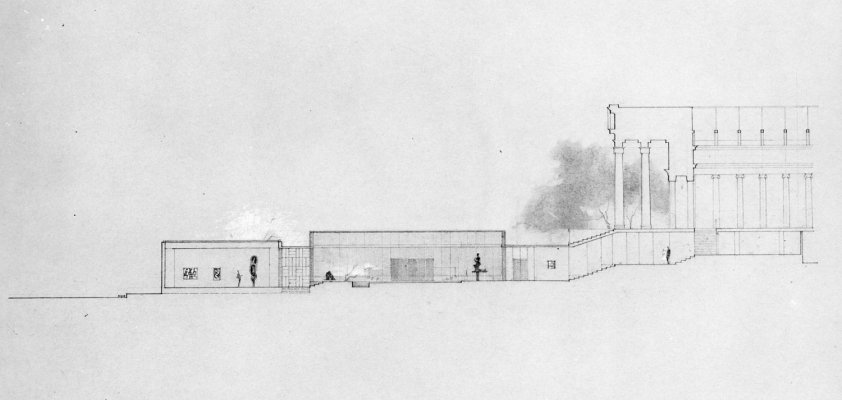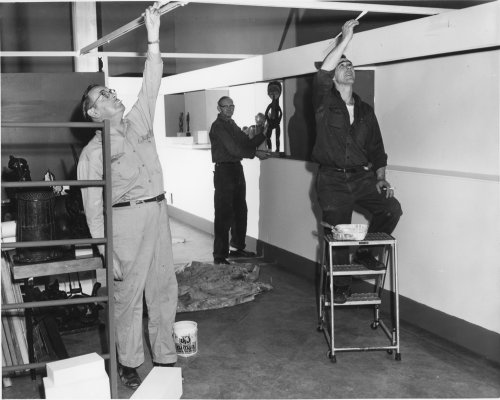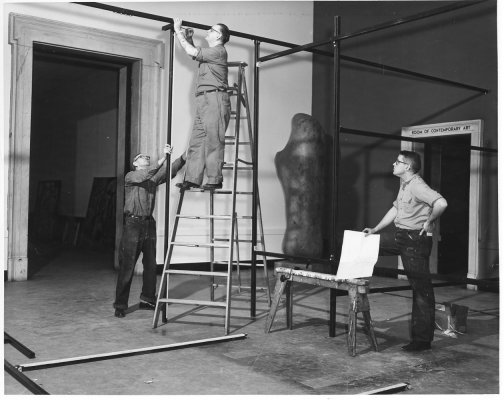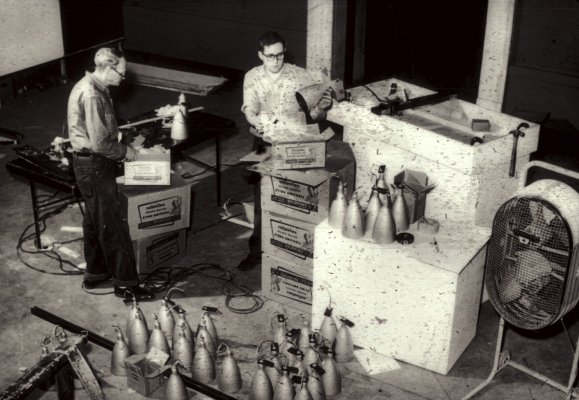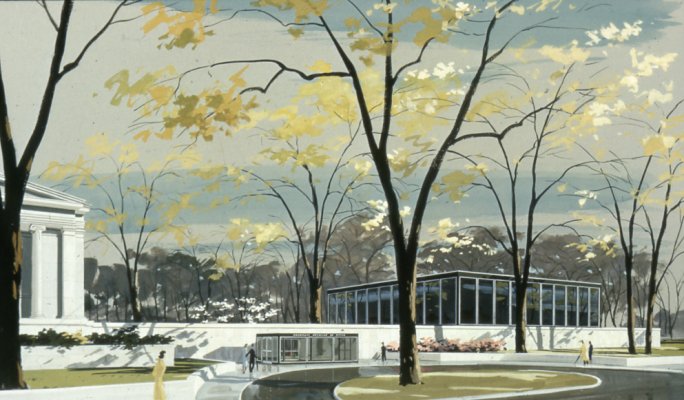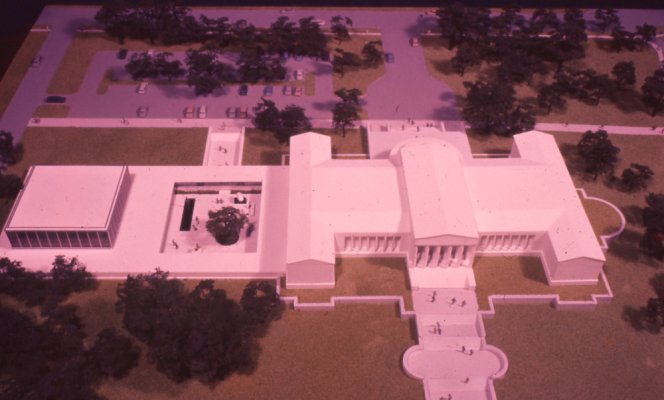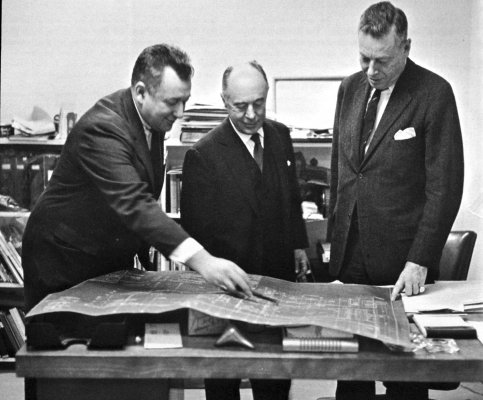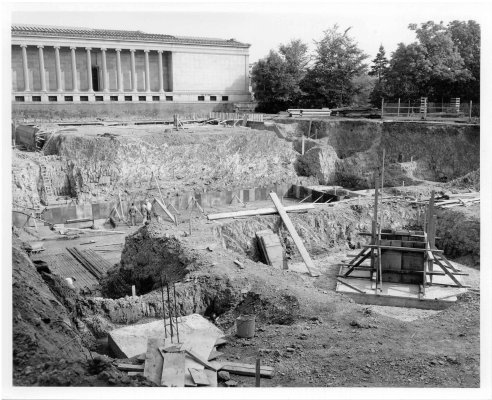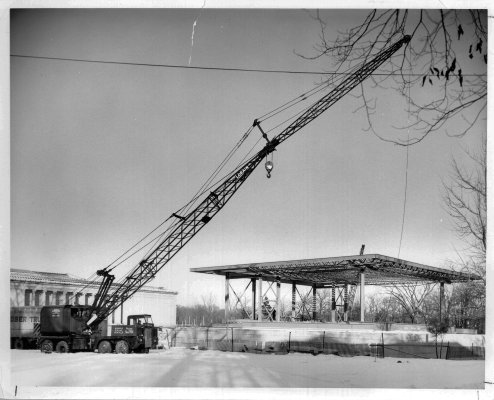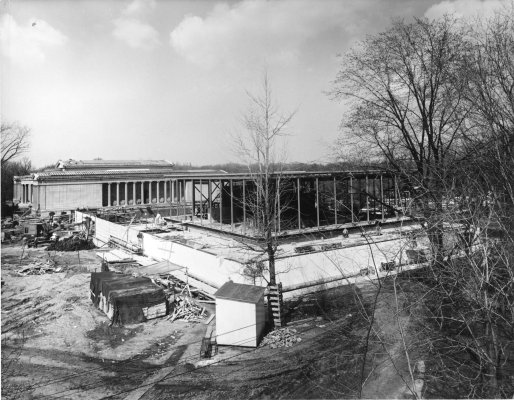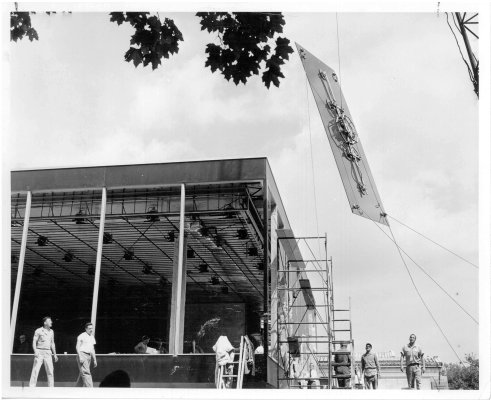Campus History Timeline: Campus History Timeline
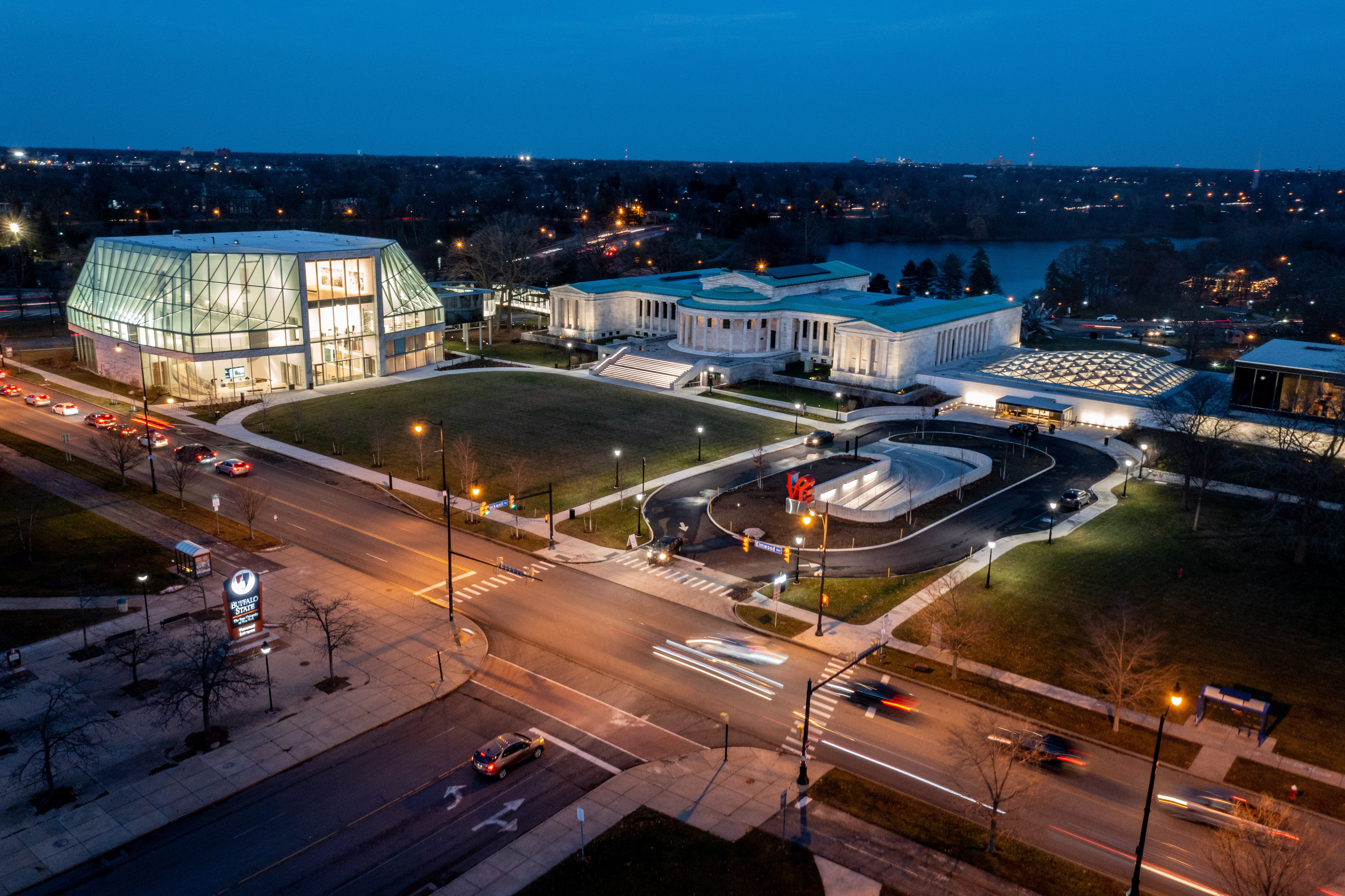
Although the founders of the Buffalo Fine Arts Academy (BFAA) agreed at their first meeting on November 11, 1862, that “Buffalo is to have a permanent Art Gallery at once,” the institution operated in several temporary locations until the turn of the 20th century, when John J. Albright helped establish its current campus and first permanent home.
1900–1905
Construction of First Permanent Building
John J. Albright provided the funds to build a permanent home for the BFAA on the museum’s current site adjacent to Frederick Law Olmsted’s Delaware Park. The Board commissioned architect Edward B. Green to design the building, and groundbreaking occurred in spring 1900. The building was intended to first serve as the Fine Arts Pavilion of the Pan-American Exposition in 1901, but construction was not completed until spring 1905.
1905
Albright Art Gallery Opens
May 31, 1905
The BFAA’s new building, named the Albright Art Gallery in honor of John J. Albright, is dedicated and opened to the public on May 31, 1905. Attendees view the Inaugural Loan Collection of Paintings, featuring 237 works by Jean-Baptiste-Camille Corot, Thomas Gainsborough, Rembrandt van Rijn, James McNeill Whistler, and many others.
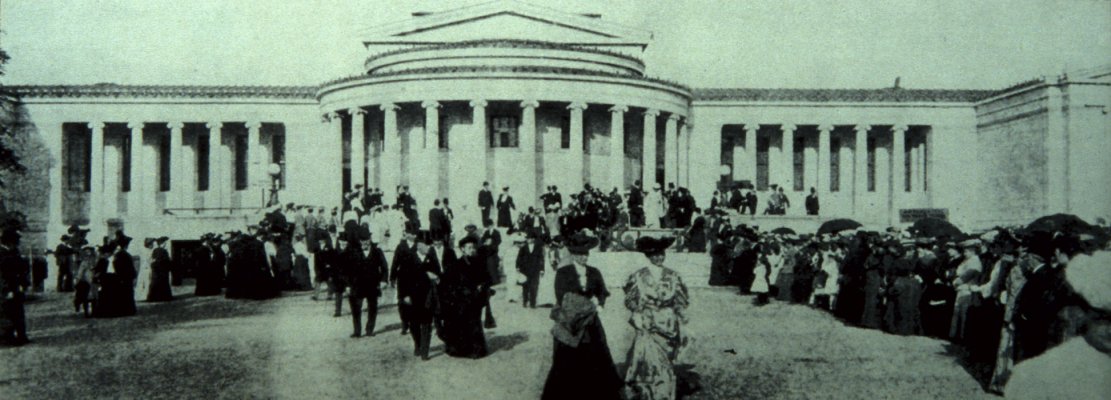
Opening day of the Albright Art Gallery, May 31, 1905
1927–1929
Albright Art School Receives Permanent Home
In 1927, BFAA Board Member Colonel Charles Clifton donated funds to renovate the abandoned Buffalo Society of Natural Sciences building on Elmwood Avenue for the Albright Art School. The remodeled building was named Clifton Hall in his honor and opened for art classes in 1929.
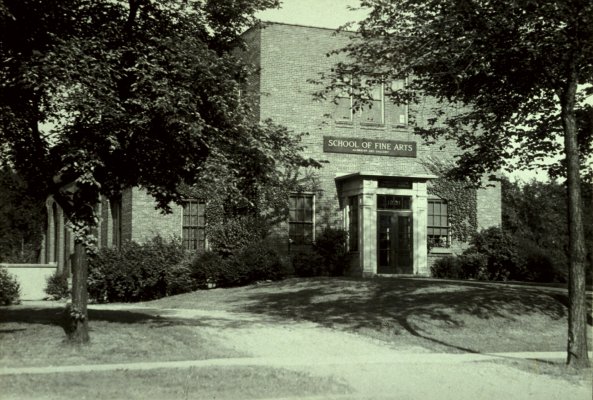
School of Fine Arts, date unknown
1929
Renovations to Sculpture Court
1933
Art Library Established
Seymour H. Knox, Jr., and his mother, Grace Millard Knox, provided the funds to establish an art library for museum staff, the Albright Art School, and the public.
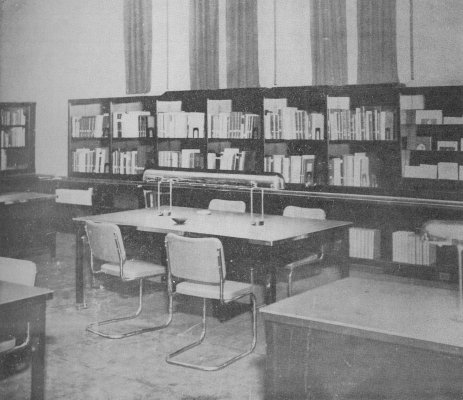
Art Reference Library, 1933
1934
Installation of Augustus Saint-Gaudens’s Eight Caryatid Figures
June 5, 1934
John J. Albright commissioned Augustus Saint-Gaudens to create the Eight Caryatid Figures on the 1905 building. Although they were part of the building’s original architectural design, and were completed by Saint-Gaudens between 1906 and 1907, they were not permanently installed until after funds were secured for their purchase in 1933.
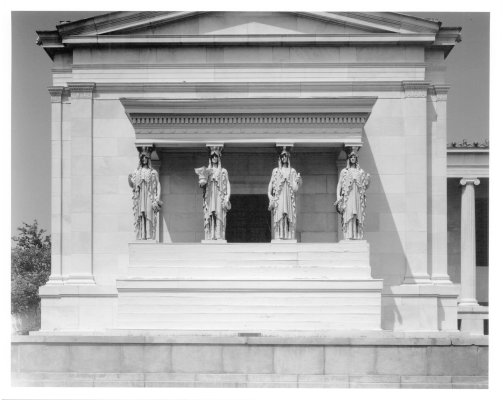
Augustus Saint-Gaudens's Eight Caryatid Figures, 1906–07
1938
New Wing Added to Clifton Hall
The new wing was added to offer more classroom space for the Albright Art School.
1943
Edward B. Green Presents Plans for Expansion
July 18, 1943
During his 46 years on the BFAA’s Board, Green saw firsthand the need for expansion. He drafted plans calling for two large galleries built on the north and south porticos, and a large addition, the Elmwood Avenue portico, which included an auditorium, two more exhibition galleries, a library, and offices for staff. The addition would have doubled the square footage of the 1905 building. It is unclear why this plan did not move forward.
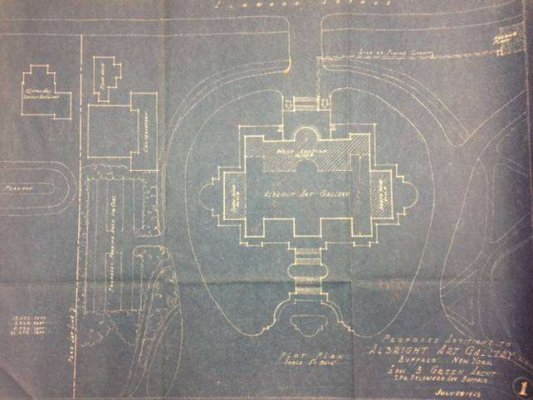
Plans for E. B. Green's proposed additions to the Albright Art Gallery
1943
Education Department Moves
Fall 1943
Due to increased demands from schools and the public, the Education Department moved from a single room in the South Wing of the 1905 building to new quarters on the ground floor, which could be accessed by a separate entrance from Elmwood Avenue.

Education Classrooms, ca. 1955
1945
Second New Wing Added to Clifton Hall
This second new wing was added to offer yet more classroom space for the Albright Art School.
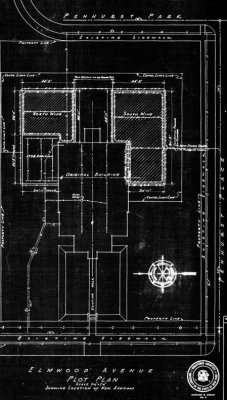
Plans for second addition to Clifton Hall, 1945
1956
Director Gordon M. Smith Calls for Urgent Renovation and Expansion
October 1956
In the museum’s 1956 Annual Report, Director Gordon M. Smith called attention to the inadequacy of the museum’s current building and the urgent need for renovation and expansion. The BFAA Board established a Building Committee that began to negotiate with architects and contractors.
1957
BFAA Board Approves Architectural Plans for Proposed Addition
June 3, 1957
The BFAA Board unanimously approved architectural plans for an addition drawn by Paul Schweikher, chairman of the School of Architecture at Yale University. The Board also called for a parking plan from the City of Buffalo, which they delivered in October 1957.
“May the spirit of John J. Albright haunt all those who have a hand in this dark deed.”
Public reaction to Paul Schweikher’s proposed addition to the Albright Art Gallery
1957
Proposed Addition Abandoned after Negative Public Feedback
Fall 1957
After the public responded negatively to Paul Schweikher’s proposed addition, the BFAA Board began to explore other possibilities for expansion, including the construction of a separate building.
1958
New Architect Selected for Addition
Early in 1958, Buffalo native Gordon Bunshaft, of Skidmore, Owings & Merrill of New York, was asked to draw up new designs for a separate addition to the Albright Art Gallery.
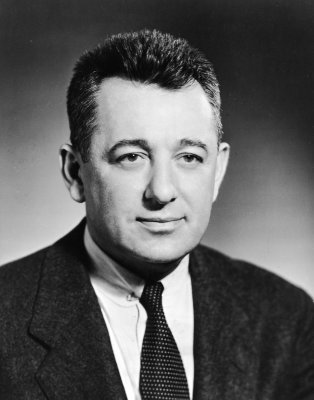
Gordon Bunshaft. Image courtesy of the Albright-Knox Digital Assets Collection and Archives.
1958
Improvements Made to 1905 Building Interior
Improvements were made in the areas of climate control, lighting, and storage.
1959
Architect Gordon Bunshaft Presents Plans for Addition
October 1959
From late summer to early fall 1959, Gordon Bunshaft and three of his associate architects presented new studies on the proposed addition and parking facilities. The BFAA Building Committee and the Parks Commissioner approved final plans in October 1959, and they were shared with the public in 1960.
1960–1962
New Addition Constructed
July 6, 1960–January 1, 1962
Groundbreaking for the new building took place on July 6, 1960. In early 1961, the structural shell was completed and work began indoors. Minor changes were made to the front entrance and parking plan in October 1961, and work was completed in late 1961. The addition was funded by $1,400,000 from the Seymour H. Knox Foundation and nearly $500,000 from BFAA Board Members, among other donors.
1961
1905 Building Renovated
Plans for the new addition also called for much-needed renovations to the interior and exterior of the 1905 building.
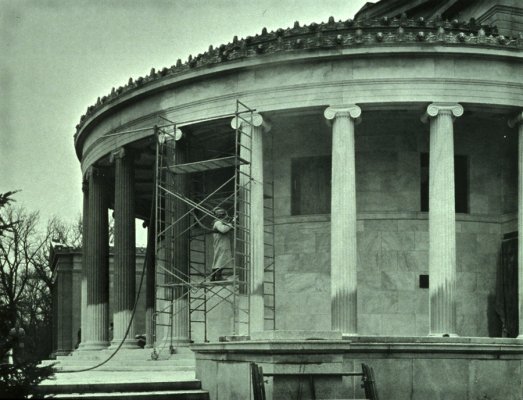
Cleaning of the 1905 building, 1961
1962
New Addition Opens
January 19–21, 1962
On Friday, January 19, 1962, the museum’s Gordon Bunshaft–designed addition was dedicated by New York State Governor Nelson A. Rockefeller and the museum was renamed the Albright-Knox Art Gallery in honor of its patron Seymour H. Knox, Jr., and his family. The Members’ Opening of the addition took place on January 20 and the museum officially opened to the public on January 21, 1962.
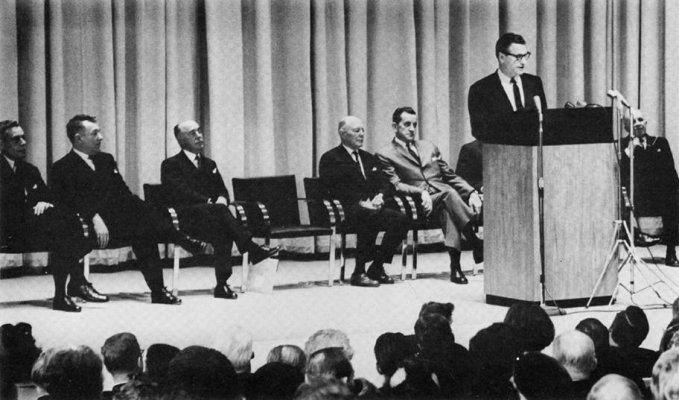
New York State Governor Nelson A. Rockefeller gives the keynote address during the dedication ceremony of the new addition, January 19, 1962
1989–1992
Clifton Hall Renovated
This long-awaited renovation addressed the museum’s need for more exhibition and storage space, and provided visitors with a resource center that included an expanded art reference library (renamed the G. Robert Strauss, Jr. Memorial Library), slide and videotape libraries, and a study center. The building reopened to the public on May 22, 1992.
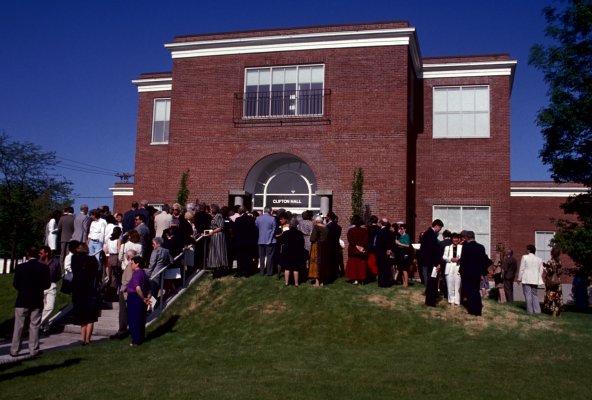
Reception for the reopening of Clifton Hall, May 29, 1992
1998–1999
1905 and 1962 Buildings Renovated
In January 1998, the museum received $2 million in federal funding for the repair and rehabilitation of its buildings, including the replacement of the air-handling systems in the 1905 and 1962 buildings. After completion, the museum was equipped with state-of-the-art heating, air-conditioning, and humidity controls that met strict federal guidelines and complied with recognized museum standards for conservation.
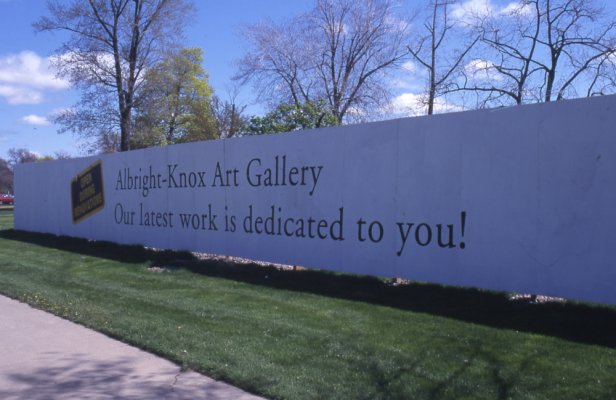
2001–2013
Planning for Growth
In 2001, the Albright-Knox embarked on a period of planning for growth, with its Strategic Plan calling for “a major architectural project on the museum’s campus.” In 2005, the museum produced the 21st Century Space Study, which identified options for greater visibility of the collection and included a possible addition, and the 2006 Vision for Growth further explored these possibilities. In 2008, the BFAA Building Committee developed a Campus Master Plan, a Land-Use History, and a Museum Operating Financial Model to assist in the hiring of an architectural firm to design a new addition. In 2010, Gluckman Mayner Architects developed a Master Plan for Growth that addressed space needs and options for expansion. In 2012–13, the architectural firm Snøhetta produced a Master Plan for Growth that included three possible general approaches for the future, all of which point to a pressing need for spatial and programmatic convergence.
2014
Albright-Knox Launches Campus Development and Expansion Project
October 1, 2014
The Albright-Knox launched its current campus development and expansion project during the Annual Meeting of the membership on October 1, 2014. From October 2014 to January 2015, the museum held a series of outreach sessions to ask AK Members and the public to share their ideas about the future of the museum. On March 2, 2016, the museum announced its intention to select an architectural design partner for an expansion at its Elmwood Avenue campus.
2016
Albright-Knox Selects OMA for Campus Development and Expansion Project
June 6, 2016
After an extensive review of proposals from dozens of world-class architects, the museum selected the award-winning architectural firm OMA to expand and refurbish its historic campus. The project is OMA’s first art museum in the United States. Shohei Shigematsu, Partner at OMA North America, partnered with staff and the community to develop a vision for a renewed and revitalized museum.

Shohei Shigematsu (third from left), Peggy Pierce Elfvin Director Dr. Janne Sirén (center), Director of Facilities Jamie Robideau (right), and the OMA team at the Topping Out Ceremony for the new Jeffrey E. Gundlach Building designed by OMA on July 7, 2021. Photo: Jeff Mace for Buffalo AKG Art Museum
2018
Schematic Design Approved
June 2018
The museum's Board of Directors approves expansion schematic design and building footprint, including more than 25,000 square feet of new gallery space and a reimagined education wing. Learn More about the New Campus
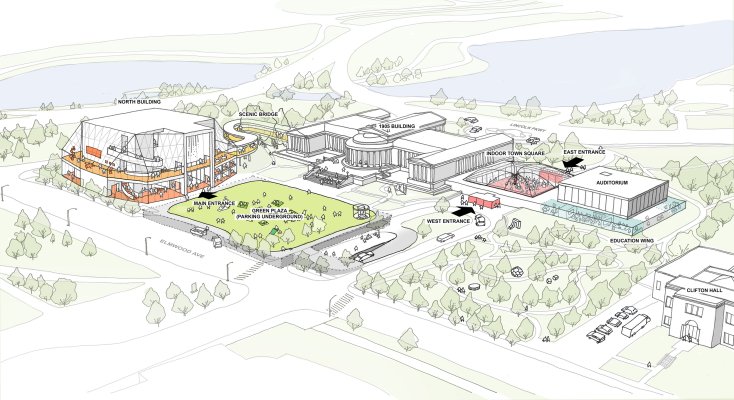
Sketch of the campus of the new Buffalo AKG Art Museum
2019
Groundbreaking
November 2019
Museum leaders and elected officials break ground on the project and construction begins
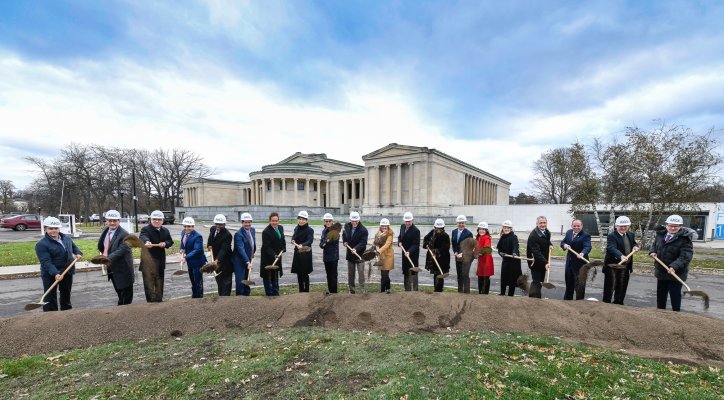
Breaking ground for the future Buffalo AKG Art Museum on November 22, 2019. Photo: Joe Cascio for Buffalo AKG Art Museum
June 2023
The Ribbon Cutting Ceremony took place on June 12, 2023.
